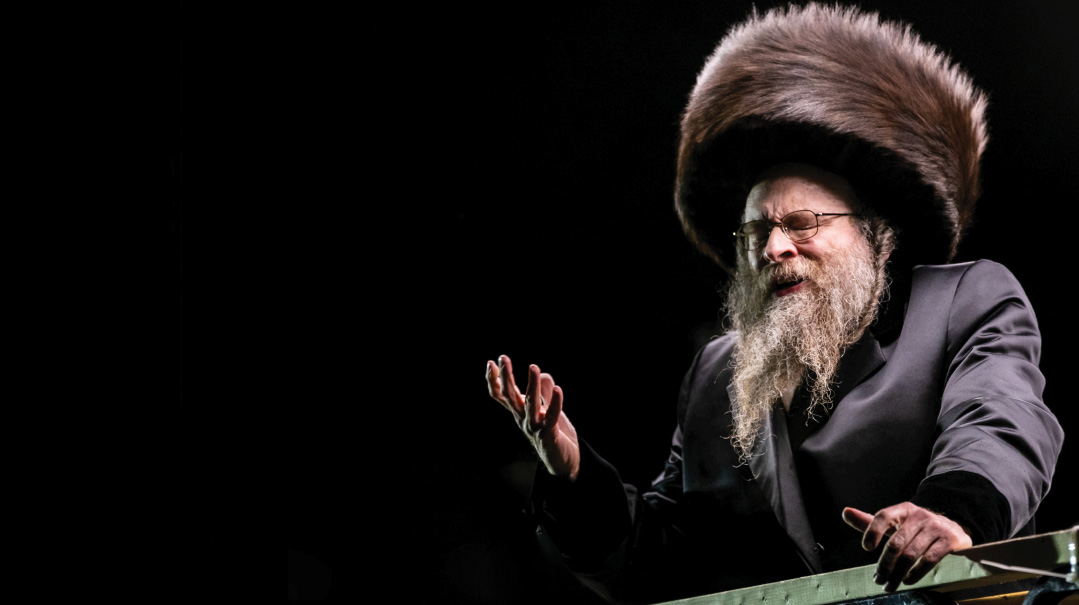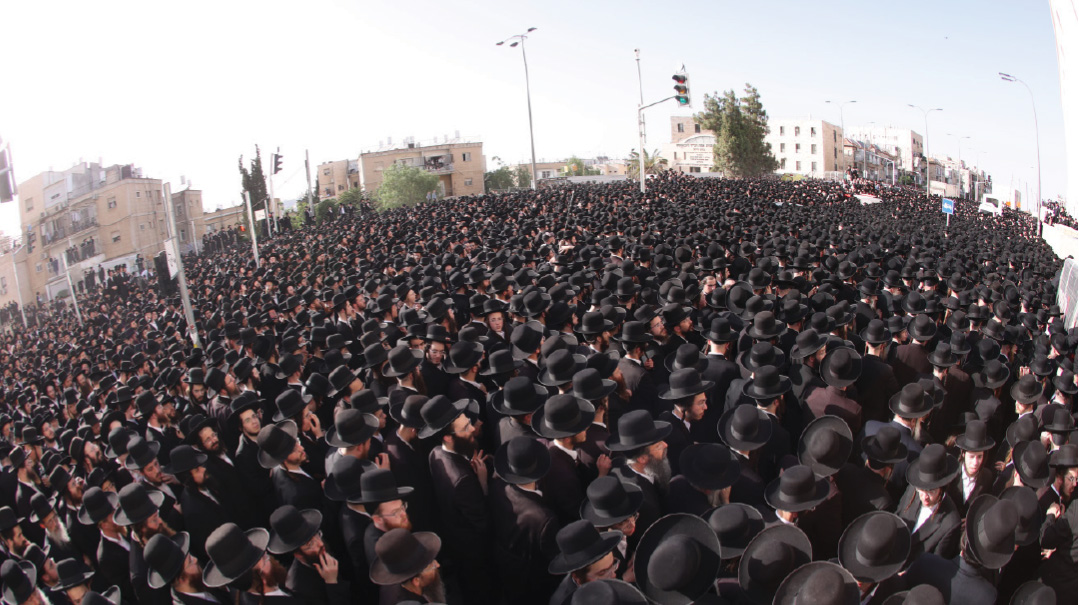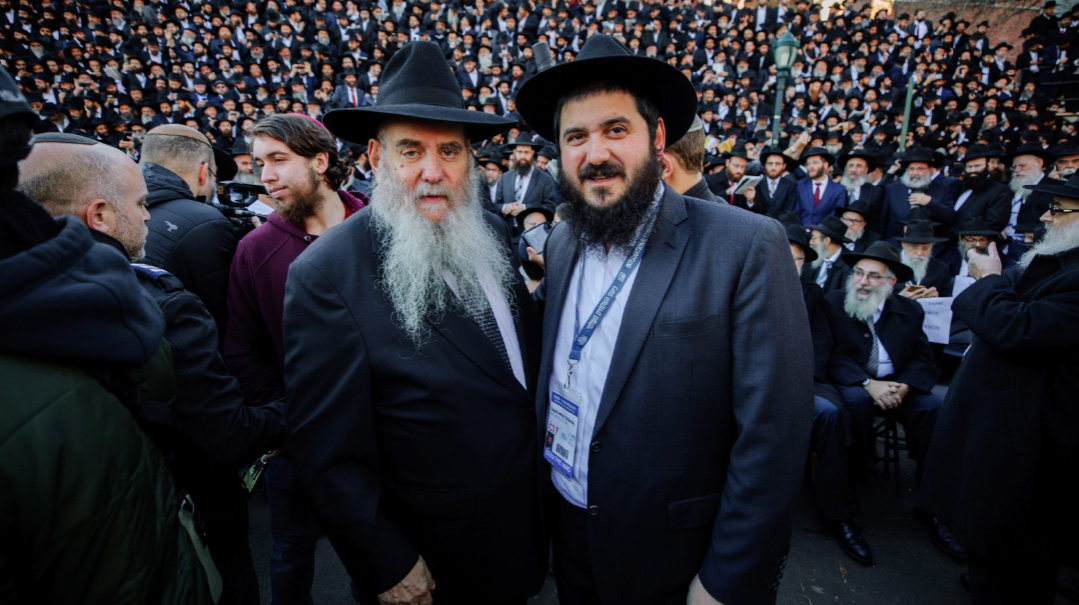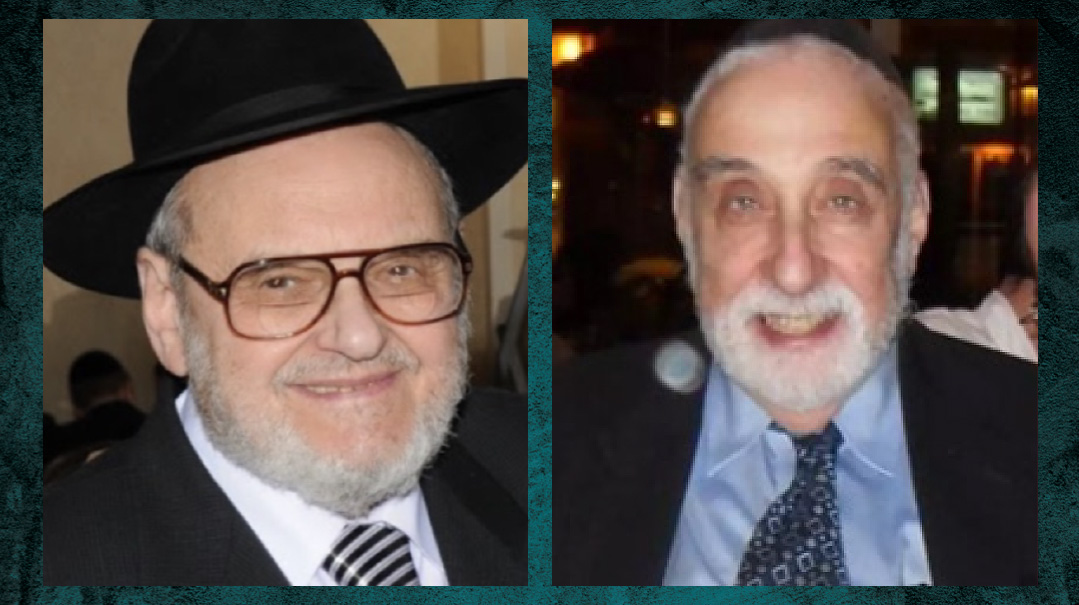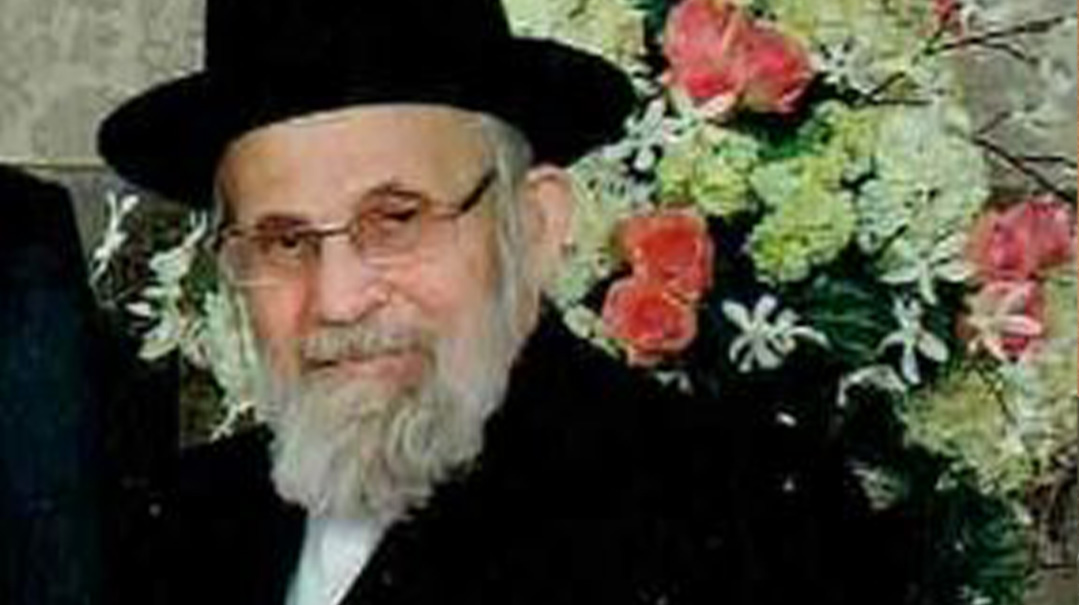For Him, the World of Torah Was One
| February 13, 2024A talmid remembers Rav Zevulun Charlop ztz”l on his shloshim
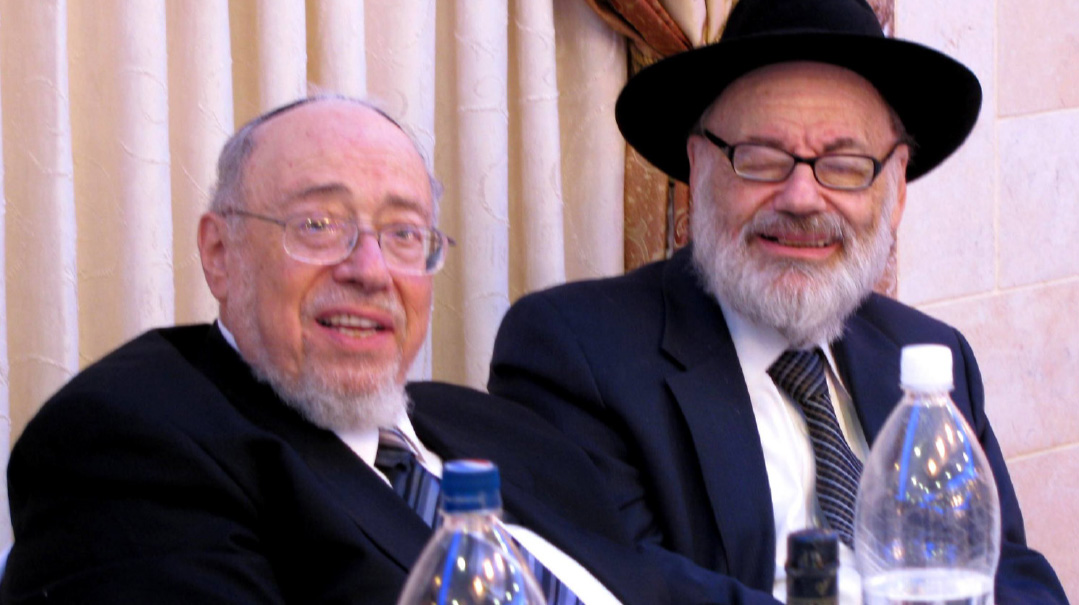
The Torah world suffered the profound loss of an extraordinary personality last month with the passing of Rav Zevulun Charlop — an erudite talmid chacham, supporter of Torah, dedicated rav, and link to previous generations.
The grandson of the Yerushalmi tzaddikim Rav Yaakov Moshe Charlop and Reb Velvel Shachor, and the son of the gaon Rav Yechiel Michel Charlop, Rav Zevulun Charlop was born in 1929 and grew up in the Bronx. He attended Yeshivas Rabbeinu Yitzchak Elchanan (Rabbi Isaac Elchanan Theological Seminary, RIETS), where he learned under Rav Yosef Dov Soloveitchik and received semichah in 1954. He eventually became the menahel of RIETS, serving in that position from 1971 to 2008, and he was also the rav of Young Israel of Mosholu Parkway in the Bronx for over 50 years. (See also Yisroel Besser’s profile of Rabbi Charlop in Mishpacha, “A Lifetime Contract in the Bronx,” Issue 299.)
I’m writing about Rabbi Charlop from my perspective as a former talmid in RIETS, but more specifically as a member of a very unique chaburah. I had the privilege and pleasure to be a part of a group that learned Mei Marom with Rabbi Charlop every week for a number of years. Mei Marom is the series of sifrei machshavah written by his holy zeide, Rav Yaakov Moshe Charlop, rosh yeshivah in Mercaz Harav, a talmid muvhak of Rav Kook, and one of the gedolei Yerushalayim. And over the course of those years, we in the chaburah developed a very special relationship with Rabbi Charlop.
While the official topic of the chaburah was Mei Marom, it also delved into topics of “Zechor yemos olam; she’al avicha v’yagedcha, zekeinecha v’yomru lach.” Rabbi Charlop very often segued into stories of a world entirely foreign to us, the world of Yerushalayim a century ago. This was Rabbi Charlop’s world, and his stories brought us back to that time and place to meet gedolim we would otherwise have only read about or learned from their seforim. He met them, he knew them, he loved them, and he loved to tell us about them. And foremost among them was the Zeide, Rav Yaakov Moshe, whose image, demus d’yukno, was before Rabbi Charlop b’chol yamav. His reverence and awe for the Zeide was palpable.
He told us of when the Minchas Elazar of Munkacs, the biggest kanai in Europe, visited Eretz Yisrael in 1930 with his future son-in-law, the teenage illui Rav Boruchel Rabinowicz. And young Boruchel would sneak out in the dead of night to speak with the Zeide on Torah nigleh and nistar. And Rabbi Charlop told us of how he continued the relationship with Rav Boruchel’s son, the current Dinover Rebbe of Williamsburg, grandson of the Minchas Elazar.
He told us of his visit to the Zeide in Eretz Yisrael in the summer of 1949. He saw that the Zeide slept on a plain wooden board, with only a sheet and no mattress, because of the Churban and the tzaar of the Shechinah b’galusah. And the Zeide only eventually agreed to sleep on a mattress, with great reluctance, due to the insistence of his daughter-in-law — Rabbi Charlop’s mother — that his ill health and advanced age necessitated it.
Rabbi Charlop told us of being at the Zeide’s house when there came a knock on the door. He answered it to find the Tchebiner Rav, author of Doveiv Meisharim, who had come to discuss a sensitive question with the Zeide.
Rabbi Charlop told of going with his mother to visit the Brisker Rav. At that time, his father, Rav Yechiel Michel, one of the heads of Mizrachi in America, was having a disagreement with the Brisker Rav on a certain issue. When young Rabbi Charlop entered with his mother, they found the Brisker Rav hooked up to oxygen, because of his asthma. The Brisker Rav said, “Eishes chaver k’chaver,” and, despite the difficulty, stood up for Rabbi Charlop’s mother.
He told us of when his father Rav Yechiel Michel was on a boat to Eretz Yisrael with the Satmar Rav and some of his chassidim. Rav Yechiel Michel saved them from inadvertent chillul Shabbos, and the Satmar Rav expressed his gratitude. The two maintained a warm relationship the rest of their days.
And of course, he told us about the RIETS roshei yeshivah he knew so well: Rav Yoshe Ber, Rav Moshe Shatzkes, Rav Yerucham Gorelick, and Rav Noach Borenstein. He told us of the great roshei yeshivah he learned with across the decades and then later also worked with.
He told us about Yahadus in America when it was in a very different state from what we know today. He was fond of recounting how his shul came to be the first in the Bronx to install air conditioning, something he was proud of because of how it made for a pleasant experience and encouraged attendance.
In 1962, when he was trying to secure a bank loan to finance the air conditioning, a number of banks turned him down for the loan, because with Orthodoxy dwindling and dying out, who could expect an Orthodox shul to pay it back? He had a meeting with a loan manager in Lower Manhattan the day after Rav Aharon Kotler’s funeral. The loan manager mentioned that he couldn’t get to work the previous day because all the streets were closed.
Rabbi Charlop informed him that the street closures were due to the Lower East Side funeral of the famed rosh yeshivah, the loan manager recognized that maybe Orthodoxy did have a future in America. Rabbi Charlop got the loan.
In our chaburah, Rabbi Charlop transcended time, but here in the present, he also transcended place. When he first entered yeshivah at RIETS in 1944, the Zeide wrote him a letter telling him that it’s not enough to be a “Yehudi ne’eman,” a faithful Jew; that’s just an American phrase. You need to aspire to be a gadol b’Yisrael; you have to be an Eretz Yisraeli.
Rabbi Charlop certainly fulfilled the Zeide’s charge; he was the nasi of Jerusalem’s Beis Zvul, the Zeide’s kollel, where he delivered shiurim on visits to Israel. And he was honorary president of the famed Etz Chaim yeshivah of Jerusalem.
But Rabbi Charlop managed to be both Eretz Yisraeli and American, Yerushalmi and New Yorker; he was menahel of RIETS, rav of Young Israel of Mosholu Parkway, and a teacher of American history in Yeshiva College. And he was somehow also the rav hamachshir on Pepsi, as American as could be. Yet he used the money he earned from Pepsi to fund avreichim in Beis Zvul. He transcended place.
Rabbi Charlop also transcended what we call hashkafos. In a story that I know firsthand, a certain bochur who was a top student in RIETS, whom Rabbi Charlop was very fond of, decided he wanted to learn with Rav Dovid Soloveitchik in Israel — not a simple thing, coming from RIETS. One might imagine that Rabbi Charlop was not thrilled about this, as he would be losing one of his best bochurim. But Rabbi Charlop himself sent this bochur to the right people to get him accepted into Rav Dovid’s yeshivah. Without Rabbi Charlop’s help, there’s no way it would have happened. That level of selflessness, of lishmah, of commitment to his talmidim and supporting Torah anywhere, is what brought it about.
Rav Motti Neuberger, a grandson, told me that his father, Rav Yaakov Neuberger, was once in Eretz Yisrael looking for shimush in hilchos niddah. Rabbi Charlop told him he’d arrange a position for him with a moreh hora’ah of the Eidah Hachareidis. As he put it, “The Eidah Hachareidis can’t say no to a Charlop!” And Rav Neuberger in fact ended up doing shimush by Rav Shalom Eisen of the Eidah Hachareidis.
One final story: Sometime around 2010, someone discovered a VHS tape in Rabbi Charlop’s office that contained footage of an azkarah for Rav Kook’s 50th yahrtzeit in late 1985, that Rabbi Charlop organized in one of the large shuls in Manhattan. We arranged a special viewing of the tape for the chaburah, and watched the keynote speeches of Rav Aharon Soloveichik and Rav Nissan Alpert.
Rav Nissan Alpert was a rosh yeshivah in RIETS, a talmid muvhak of Rav Moshe Feinstein, and rav of Agudas Yisrael of Far Rockaway. He unfortunately passed away young, in May 1986. In his speech, Rav Nissan related some pieces from Rav Kook’s Sh’eilos U’teshuvos, Orach Mishpat, Daas Kohein, and Mishpat Kohein, along with some very nice he’aros that he added.
At the end of his speech, Rav Nissan said, “If anyone has any tainehs on me —‘You’re an Agudah Rav, how can you speak at an azkarah for Rav Kook?’ — all I can say is, read the teshuvos, and all your questions will be answered.”
Rabbi Charlop was taken by that statement of Rav Nissan. I believe it was because that’s how Rabbi Charlop lived his life in this world, that those tainehs, those divisions, just didn’t matter to him.
So he was able to stand at the helm of RIETS for 37 years, but at the same time connect to Munkacs and Dinov, Satmar, Mercaz Harav, Brisk, Agudah and Mizrachi, Eidah Hachareidis, and Rav Dovid Soloveichik, because to him there were no contradictions. To him, it was all one world, the singular world of the Olam HaTorah, and he was fiercely committed to it in its many different manifestations. He transcended lines, he transcended boundaries, he transcended time and place.
Yehi zichro baruch.
—With thanks to Rabbis Tsvi Selengut, Yosef Kassorla, Yosef Sharbat, and Daniel Jerome.
(Originally featured in Mishpacha, Issue 999)
Oops! We could not locate your form.

